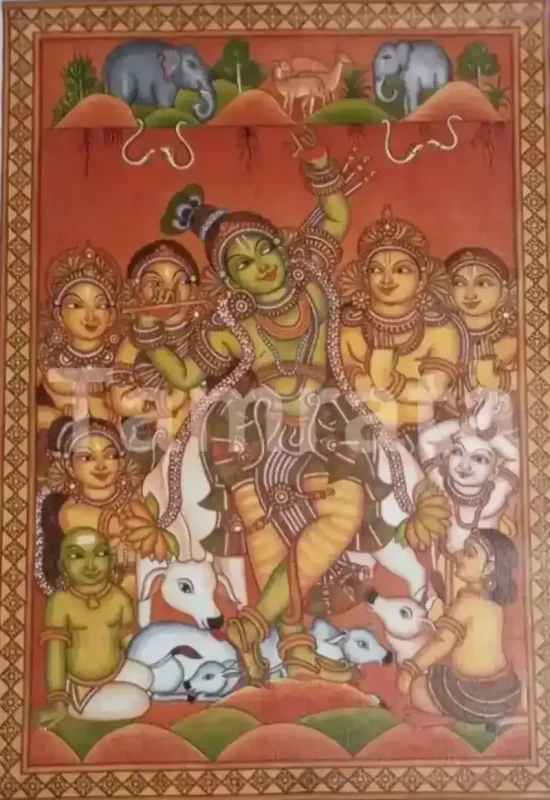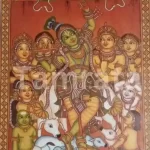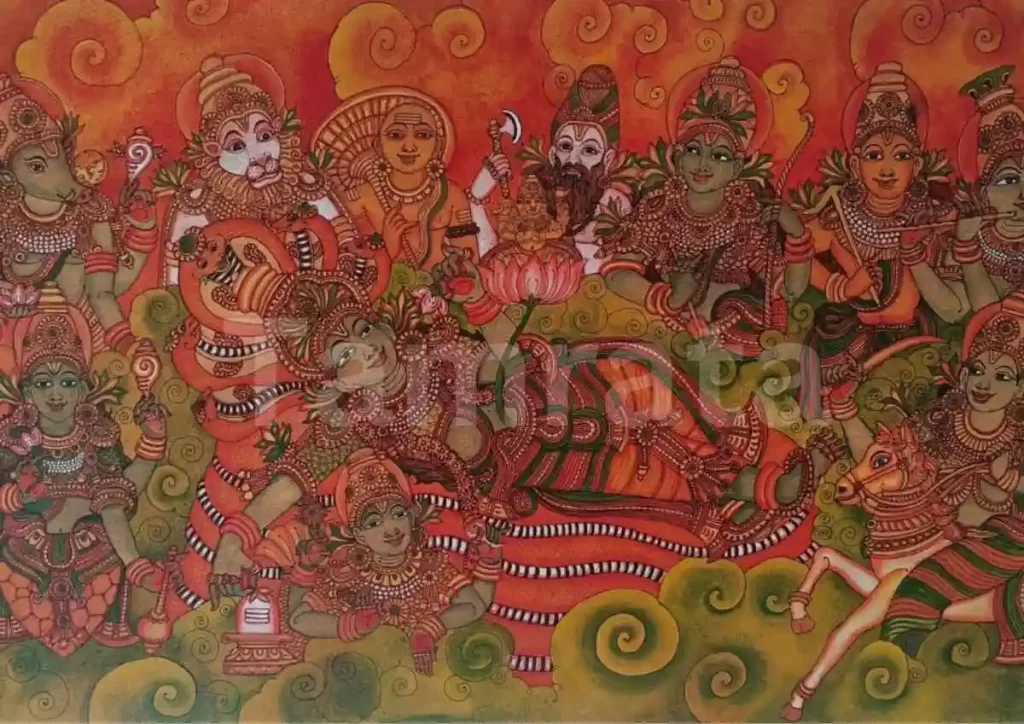Blog
Reviving Temple Art : The Cultural Legacy of Kerala Mural Paintings

In the lush, verdant landscapes of Kerala, the walls of ancient temples whisper tales of divinity and devotion through the vibrant hues of mural paintings. These artworks are not just decorative marvels; they are profound expressions of Kerala’s spiritual and cultural legacy. Today, we delve into the historical significance of these temple arts and the passionate efforts to preserve and revive them, ensuring that their beauty and stories continue to inspire future generations.
The Historical Significance of Kerala Mural Paintings
Imagine stepping into a temple in Kerala centuries ago. The walls, alive with color, depict the grandeur of Hindu mythology, where gods and goddesses come to life in intricate detail. These murals, dating back to the 8th century AD, flourished under the patronage of the Chera, Chola, and Pandya dynasties. They reached their zenith in the 16th and 17th centuries, when local chieftains and royalty commissioned them to adorn temples and palaces.
Kerala murals are characterized by their distinctive style: bold outlines, dynamic compositions, and a vibrant palette known as the Panchavarna – red, yellow, green, black, and white. These natural pigments tell tales of epic battles, divine love, and moral lessons, making the walls not just visual delights but also spiritual guides for the devotees.
The Decline and the Heartfelt Revival Efforts
With the dawn of colonial rule and changing socio-political landscapes, the tradition of mural painting began to fade. Temples were neglected, and the vibrant murals started to wither away, their colors dimming with time. But the story doesn’t end there. In the late 20th century, a wave of passion and dedication swept through Kerala, breathing life back into these ancient artworks
Preserving the Past, Painting the Future
Organizations like the Archaeological Survey of India (ASI) and the State Archaeology Department have been instrumental in rescuing these masterpieces from the brink of oblivion. With meticulous care, they have restored these murals, ensuring that the original colors and details are preserved. Advanced techniques have been employed to clean, stabilize, and repair the murals, bringing them back to their former glory.
 Nurturing the Artists of Tomorrow
Nurturing the Artists of Tomorrow
Education is the cornerstone of any revival effort. Institutions like Kerala Kalamandalam and various art schools offer specialized courses and workshops on mural painting. Young artists are taught the traditional methods, blending ancient techniques with contemporary creativity. These programs are not just about skill-building; they are about igniting a passion for preserving cultural heritage.
Modern Murals: A Fusion of Tradition and Innovation
 Today’s artists are weaving the old with the new, creating contemporary murals that echo traditional styles. Public art projects, exhibitions, and cultural festivals showcase these modern masterpieces, making them accessible and relatable to a wider audience. This fusion ensures that Kerala mural art remains dynamic and ever-evolving.
Today’s artists are weaving the old with the new, creating contemporary murals that echo traditional styles. Public art projects, exhibitions, and cultural festivals showcase these modern masterpieces, making them accessible and relatable to a wider audience. This fusion ensures that Kerala mural art remains dynamic and ever-evolving.
Community: The Heartbeat of Revival
Reviving temple art is a collective effort. Local communities, temple authorities, and cultural organizations are deeply involved in conservation efforts. Initiatives like the ‘Adopt a Mural‘ program encourage individuals and groups to sponsor restoration projects, fostering a sense of collective pride and responsibility towards preserving this cultural treasure.
A Living Legacy
Reviving Kerala mural paintings is a journey of rediscovery, of rekindling a love for an art form that has touched countless lives. It is about more than just preserving paintings; it is about celebrating a cultural legacy that has shaped Kerala’s spiritual and artistic identity. As we honor these efforts, we are reminded of the timeless beauty and enduring significance of Kerala’s mural heritage – a living testament to the power of art to transcend time and inspire the soul.


